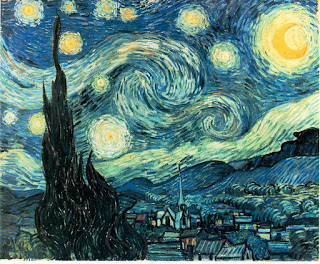11:01 P.M.
I was recently in Europe touring with my jazz band. Everything was wonderful; the people, the culture, the sights, and the music were all fantastic. However, I also noticed some very interesting weather. While nearly all the trip was hot and sunny, there were some interesting cloud formations that I had the pleasure of seeing while climbing Mt. Vesuvius with my family.
These waves are the result of a phenomenon called Kelvin-Helmholtz instability, which was named after Lord Kelvin and Hermann von Helmholtz. Kelvin-Helmholtz instability occurs when there is either one fluid with velocity shear and density differences within it, or it can occur with two different fluids entirely, with velocity shear occurring between the two fluids. A classic example of Kelvin-Helmholtz instability is wind waves. Air is less dense than water and generally moves faster. When moving air comes in contact with the relatively stagnant water, the instability is manifested in waves moving along the surface of the water. Although it is not as visible, the same thing happens in different levels of air velocity. Faster, less dense air moving on top of slower, more dense air can produce the same Kelvin-Helmholtz waves found in water, and when there is sufficient moisture and clouds form, this interaction can be seen. The picture above is the best example I have witnessed of it, but there are better examples out there with the waves stretching on for miles. Take a look at some of the pictures below!
Kelvin-Helmholtz waves over Monument, Colorado. Photo credit: Terry Robinson
Low-elevation Kelvin-Helmholtz waves
Kelvin-Helmholtz waves over Mt. Shasta. Photo credit: Beverly Shannon (1999)
Kelvin-Helmholtz waves in "Starry Night." Painting credit: Vincent van Gogh
One thing seems to be common here. All of the waves occurred in places with uneven topography. Monument, Colorado, is near the Rockies, and hills/mountains are clearly seen in the other photos. My picture was taken by Mt. Vesuvius, and hills are present even in van Gogh's masterpiece. Mountains create instability, and therefore, Kelvin-Helmholtz clouds.
Below is a cool model of Kelvin-Helmholtz instability. I found it on wikipedia. The copyright gives the permission for anybody to use this file. It looks like "Bdubb12" provided the animation and "raeky converted it from animated .gif to ,avi to ,ogv.
I hope you enjoyed this blog post! It's 12:02 A.M. and time for me to go to bed.
Thanks for reading,
Charlie




No comments:
Post a Comment